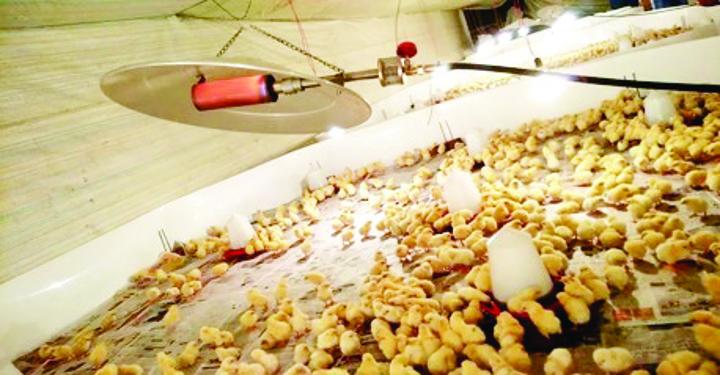Africa-Press – Namibia. VICTOR MAKAHAMADZETHE term brooding refers to an artificial environment created to nurse chicks during the first few days of their lives.
In commercial production practices, brooding is done by introducing artificial heat and providing an environment to keep the chicks warm for the first three weeks of their lives. Brooding is also done to allow the hen time to rest and mate to begin laying eggs as soon as possible. Farmers use various methods to keep chicks warm, because at this stage, they will not have developed their own feathers and cannot regulate their own body temperatures.These include a well-planned outlay of drinkers and feeders, wooden shavings and heat sources. The brooderThe ideal brooders are round with the heat source at the centre to enable the heat source to distribute heat evenly without creating hot and cold spots inside. A round brooder also enables the farmer to systematically place feeders and drinkers in a manner that creates easy access to food and water for the chicks. The brooder can be constructed out of old conveyor belt material or recycled cardboard boxes. The advantages of an effective brooding system• Minimises chickens stress levels• Helps minimise mortalities caused by stampeding chickens• Helps chickens develop a good skeletal structure• Promotes chickens to eat and drink water more effectively • Helps chicks use less energy to regulate their own body temperaturesTypes of broodersCharcoal drumsFarmers who do not have electricity, can use charcoal to provide heat to their day-old chicks. Charcoal drums have the capacity to warm up about 1 000 chicks at a time. Charcoal is a very cheap source of energy, particularly in rural areas. However, the disadvantage of charcoal as a heat source is that over time, the heat begins to die down, making it important for a fresh supply of charcoal to be made every 5-6 hours.Care must be taken to only introduce the charcoal heater into the fowl when only live coals without fire and smoke remain. The more the charcoal, the longer the heater is effective. Under normal circumstances, broilers have a shorter brooding period of about two weeks in summer and three in winter due to their rapid growth compared to other types of chickens such as layer chicks and boschveld chickens. Electric Infra-red lamps Farmers with access to electricity can use infra-red bulbs. These are used to provide warmth to chicks during the brooding stage. A standard infra-red bulb can warm up 100 chicks at a time, thus the farmer must ensure there are enough bulbs to avoid stampedes which may result in high mortalities.Gas brooderFarmers may also use gas heaters to warm up their chicks. A standard gas heater can heat up to 1 000 chicks at a time. The advantages of using gas heaters is that heat remains constant compared to the charcoal drum whose heat gradually dies down with time. However, the only setback with gas brooding is the cost of gas, particularly due to the fact that the brooder may need to be kept on the entire night or longer, especially in colder regions.The litter layer Farmers are advised to use wooden shavings as bedding for their brooders because the shavings have the ability to insulate the floors against cold temperatures and also due to the fact that they can absorb droppings and water resulting from accidental spillages. Poultry farmers are also advised to use shavings without chemicals for their chickens. For best results, farmers are advised to put shavings to depths of about 15-20cm which will gradually be compressed as chicks continue moving on them.Feeding During brooding, broiler chickens are fed on broiler starter crumbles while layer chicks are fed on pullet starter mash. Feed is placed in round chick trays and three-litre drinkers to allow the chicks to have easy access to food and water. Day-old chicks are also given vitamin supplements in drinking water for the first five days of their lives in order to replenish energy levels lost during transportation. * Victor Makahamadze is the agri-business principal consultant for Farmervic Enterprises CC.






